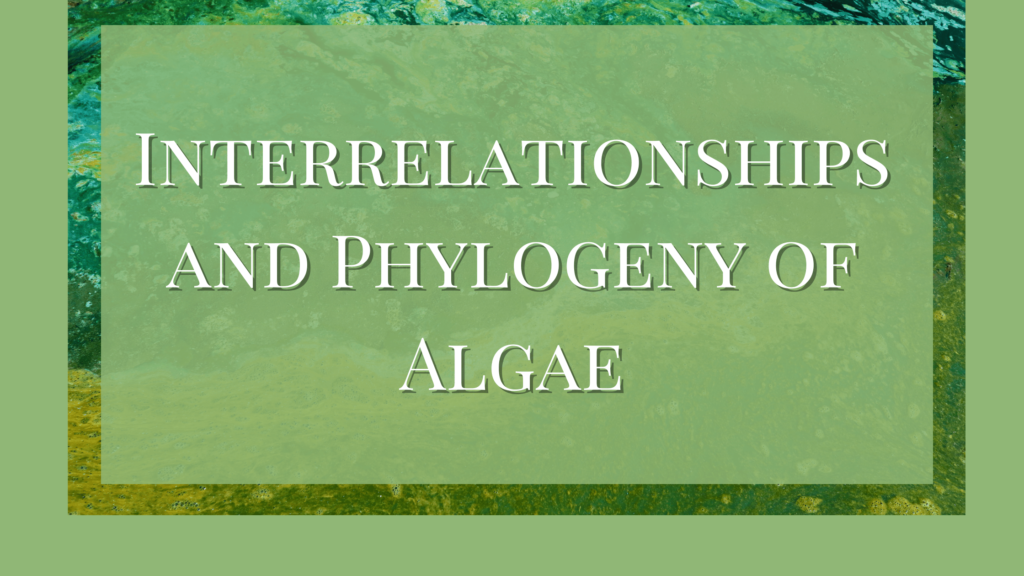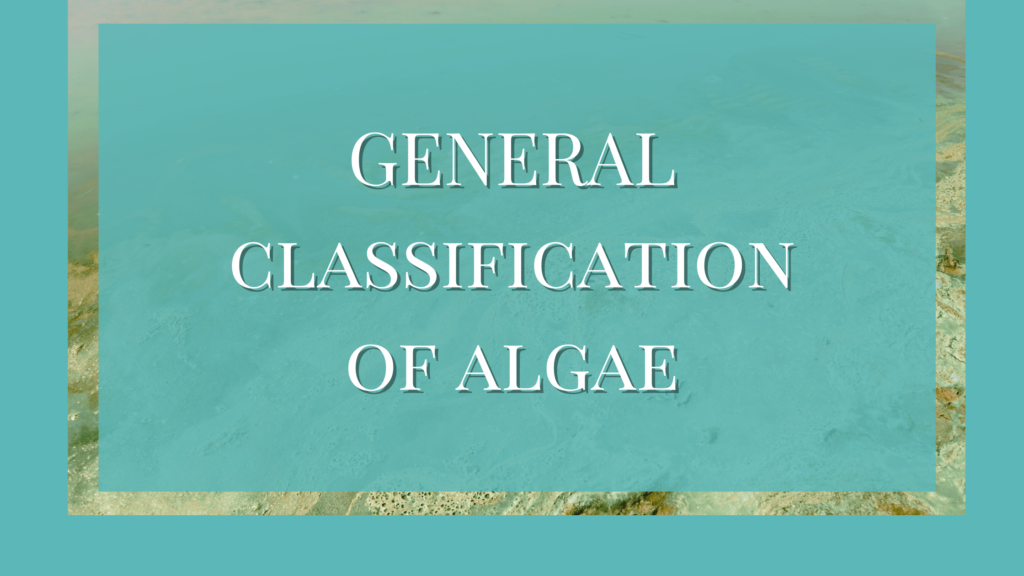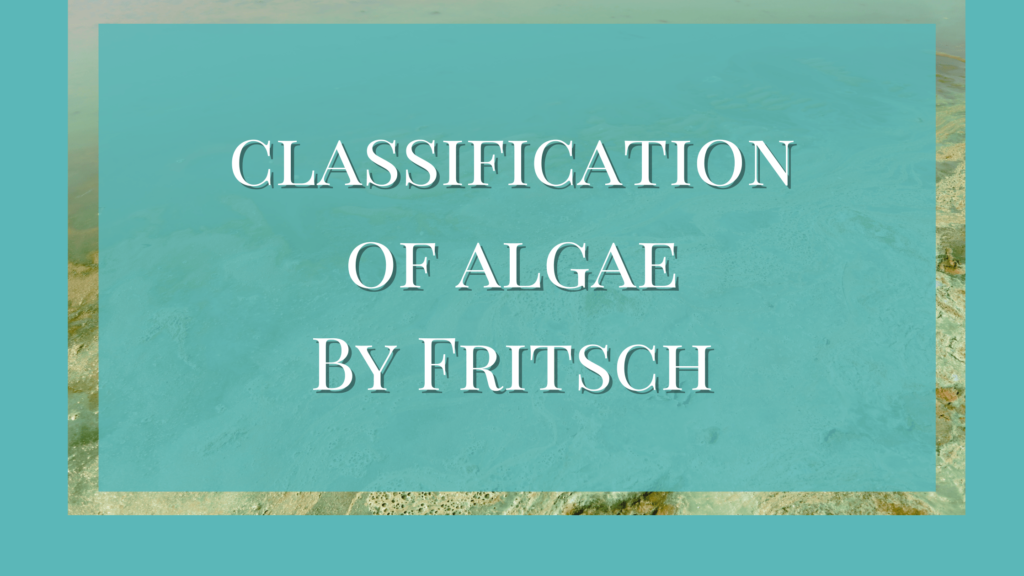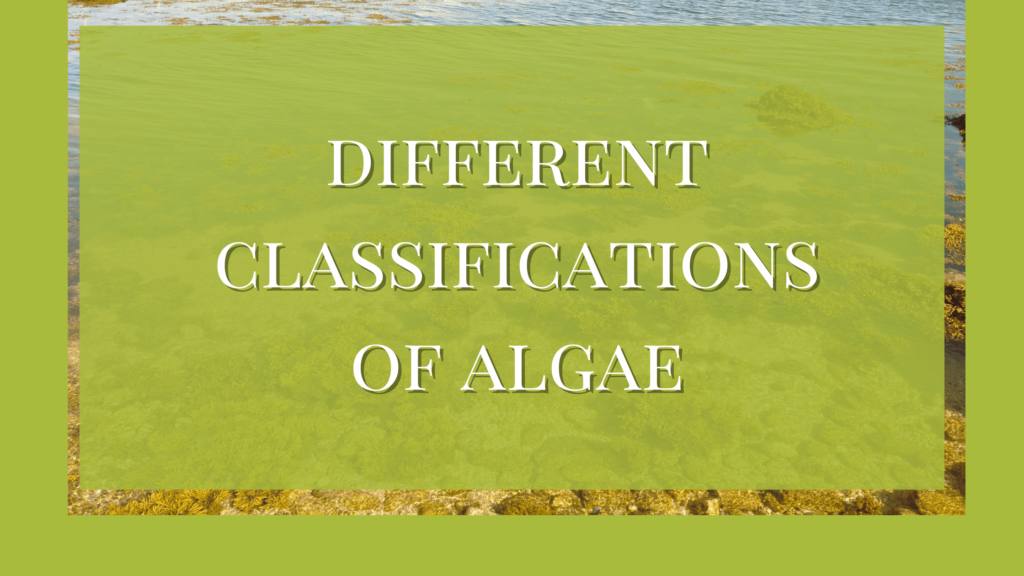The interrelationship and phylogeny of algae and the eventual evolution is mainly based on the appearance of flagella and the presence of large non-motile filaments.
It is generally believed that the universal appearance of flagella with the same basic pattern in several algal divisions indicates the possible origin of these divisions from the flagellate ancestor.
Moreover, the presence of large non-motile filaments and expression of higher morphological elaboration in some predominantly flagellate divisions indicates the prevalence of convergent evolution of algae into various divisions. So, here is the general outline of the interrelationships and the evolution of the various types of algae.
Cyanophyta
Cyanophyta is considered to be the oldest of the algae because of the prokaryotic organization of their cells and their presence of fossils in Precambrian rocks. The blue-green algae might have evolved from simple bacteria with gliding movement as a second photosynthetic line.
In both these groups, the intra-cytoplasmic membranous system arises by the invagination of the cytoplasmic membrane. This membranous system supports the pigmentation in algae. It also helps organize various enzymes responsible for all vital activities inside the cell. Gas vacuole organization in blue-green algae is also similar to that in green bacteria.
The occurrence of glucosamine peptide in the cell wall, the presence of sterol, the oxidation of hydrogen sulfide with the production of sulfur particles, genetic recombination in Cyanophyta, and similar gene transfer in bacteria are the most important features that suggest the close relationships between the bacteria and Cyanophyta.
Dinophyta
Dinophyta has peculiar nuclear features that appear to have originated directly from flagellate bacteria that have developed from non-flagellate bacteria. This group is believed to act as a connecting link between Prokaryota and Eukaryota.
These dinoflagellates have typical mesokaryotic nuclei, eyespot, pustule, and emphysema of thecal plates and colorless membranes. The envelopment of the nucleus and chloroplast by a single membrane that separates these organelles from the rest of the cytoplasm suggests that these organelles are endosymbionts that have lost their cell wall.
The presence of Chloroplast Endoplasmic Reticulum, stacks of 3 thylakoids, girdle lamellae, and fucoxanthin indicate that these symbionts are probably members of heterokont Chrysophyta, Bacillariophyta, Xanthophyta, and Phaeophyta. Membrane-bound pyrenoids are known only in Bacillariophyta and dinoflagellates.
The nucleus is devoid of the basic proteins, and histones. The fibrillar construction of chromosomes and continuous synthesis of DNA suggest that these organisms form a third intermediate group, the mesokaryotes, and the lack of histones suggest their primitive nature.
Cryptophyta
Cryptophyta shows some remote similarity to Dinophyta in cell organization and the presence of chlorophyll-c. However, the assignment of Cryptophyta to dinoflagellates, as done by some, creates more problems than are solved (Prescott, 1969).
The eukaryotic nucleus, periplast, flagella with stiff hairs, and 3 or more thylakoids are the distinctive characteristics of algae in this group that keep it apart from Dinophyta. The presence of biliprotein indicates some relationship with Cyanophyta. It is believed that Cryptophyta-like dinoflagellate might have originated from flagellated bacteria at a very early period in evolution.
Interrelationship and Phylogeny of Algae in Rhodophyta
Rhodophyta is suggested to have originated from Cyanophyta, mainly due to their similarities in basic structure and pigmentation. But the prokaryotic nucleus, unicellular Cyanophyceae resemble unicellular rhodophytes in many aspects which include the presence of biliproteins and a few specific carotenoids, the 4-linked polyglucans floridean that resembles cyanophycean starch, presence of trehalose and thylakoid structure.
While emphasizing the similarities between Rhodophyta and prokaryotes, Chauffaud (1963) visualized the derivation of trichogamous sexual reproduction in algae such as the rhodophytes from the primitive type of sexual reproduction encountered in certain bacteria.
The presence of centrosome-like bodies and centrioles is indicative of its origin from some flagellate ancestors like Cryptophyta, the only flagellate group that has biliproteins.
The similarities of Rhodophyta and Cyanophyta might be due to their origin from a common ancestor and parallel evolution and dissimilarities due to their earlier deviation from each other and adaptations to two different.
Chrysophyta
Members of Chrysophyta show close relations with Dinophyta in the presence of chlorophyll – a and c, carotenes, and to some extent in the structure of cells. This group appears to have originated from some simple member of Dinoflagellata with apical flagella (Desmophyceae).
Bacillariophyta
Bacillariophyta shows resemblances to Chrysophyta in the presence of chlorophyll a and c and fucoxanthin. It appears to have originated from Chrysophyta. It differs from haploid Chrysophyta in being diploid and possessing carotene e.
Xanthophyta
Xanthophyta is closely related to Chrysophyta in chloroplast structure (3 thylakoid- CER) and heterokont flagellation and differs in the absence of chlorophyll c and fucoxanthin.
Phaeophyta
Phaeophyta has no motile members but has motile gametes and zoospores, which indicates their motile ancestry, which can be traced either from the chlorophyllous Dinophyceae with lateral flagella and abundant carotenoids or from Chrysophyta having similar pigments and food reserves. The origin of members in Phaeophyta from Dinophyceae seems logical due to their similarity in flagellation.
Chlorophyta
Chlorophyta appears to have evolved from simple motile unicellular members of Xanthophyta by the gradual development of chlorophyll b from chlorophyll a, as the latter is an essential precursor of the former.
Charophyta
Charophyta is believed to have evolved from Chlorophyta due to its similarity in pigmentation but dissimilarity in the structure of spermatozoids, flagellation type of life history, and the lack of any interconnecting fossil forms leaves the point quite doubtful.
Desikachary and Sundaralingam have suggested an origin from a corticated presence of node and internode, cortex-like covering produced from nodal cells, laterals of limited growth, and the presence of reproductive organs to the atlas only. However, the chromosomes of Charophyta are large while those of Chaetophorales are small.
The affinity between Charophytes and bryophytes has been emphasized by round. Sterile walls around the sex organs, the structure of spermatozoids, and protonemal germination form the basis for their origin from bryophytes. However, these two groups differ drastically in their life cycles (haplontic in Charophyta and diplohaplontic in bryophytes).
Euglenophyta
Euglenophyta is often associated with Chlorophyta suggesting an origin from some unicellular Chlorophyta. Food reserves, flagellation, and cytological features are quite distinct from Chlorophyta and show close relations with Chrysophyta and Xanthophyta.
Conclusion
Further research reveals not only the phylogeny of algae but also its interrelationships with land plants as well. It is indicated that the land plants are the descendants of green algae through various evolutionary processes.
Both Chlorophyta and Charophyta had the same ancestor and the land plants descended from the Charophycean plants. Studies based on the molecular structure of these plants have also indicated a common ancestry among these plants. Yet, there is still no conclusive evidence to prove this hypothesis.
The field of algology is optimistic about finding more clues on this matter due to the advancement in genomic data and research.
References
Frédérik Leliaert, David R. Smith, Hervé Moreau, Matthew D. Herron, Heroen Verbruggen, et al.. Phylogeny and molecular evolution of the green algae. Critical Reviews in Plant Sciences, 2012, 31 (1), pp.1-46. https://hal.science/hal-01590252/document




